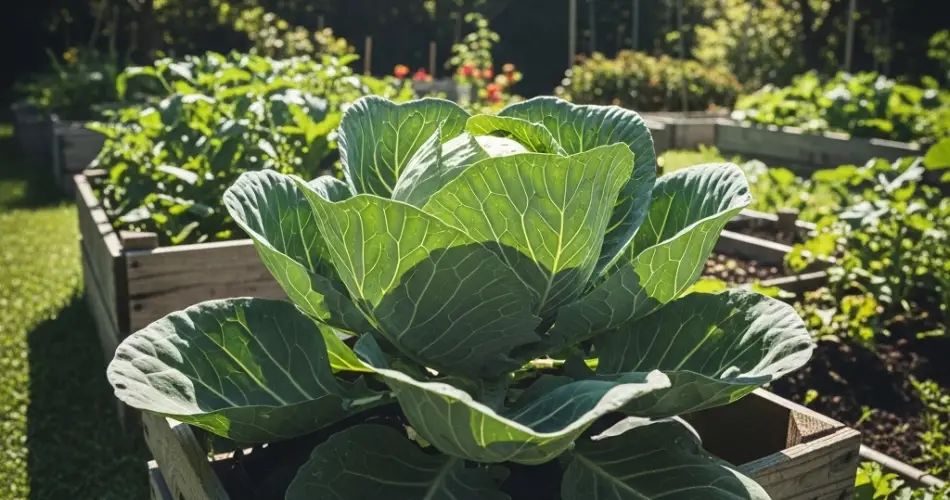Growing cabbage on a balcony is not only possible—it can be highly rewarding. With limited outdoor space becoming the norm for many urban dwellers, container gardening has emerged as an effective way to grow fresh vegetables. Using wooden crates as planters offers a practical and space-efficient method to cultivate cabbage, turning even a small balcony into a productive mini-garden.
This approach gives you direct access to fresh, crisp cabbage heads for salads, slaws, stir-fries, and more—all while enjoying the satisfaction of homegrown food.
Why Grow Cabbage in Crates?
Cabbage plants require sufficient root space and good soil drainage to thrive. Wooden crates are ideal because they provide:
-
Adequate depth for root growth (ideally 12 inches or more)
-
Natural airflow due to their slatted design, preventing waterlogging
-
Portability to reposition the plants for optimal sunlight or shelter
-
Eco-friendly reuse by repurposing wooden crates for gardening
-
Easy maintenance on balconies, patios, or small yards
Growing cabbage in crates lets you optimize limited space while maintaining healthy plants and a tidy growing area.
What You’ll Need
To start your crate-grown cabbage garden, gather the following:
-
Wooden crate(s), at least 12 inches deep
-
Landscape fabric or burlap (optional, for lining)
-
Quality potting mix with good drainage
-
Compost or organic fertilizer
-
Cabbage seedlings (preferably varieties suited to container growing)
-
Watering can or hose with gentle spray
-
Mulch material (optional)
Preparing Your Crate Planters
-
Lining the Crate
If your crate has wide gaps, line the interior with landscape fabric or burlap to keep soil in place while allowing water to drain. Secure the lining well. -
Filling with Soil
Mix potting soil with compost or aged manure to provide nutrients. Fill the crate, leaving 1–2 inches from the top for watering. -
Choosing the Right Location
Place the crate in a spot that receives at least 6 hours of sunlight daily. Cabbage prefers cooler weather but still needs plenty of light for growth.
Planting Your Cabbage
Cabbage seedlings are best started indoors or purchased from a nursery for an easier start. When transplanting:
-
Space seedlings about 10-12 inches apart to allow room for heads to develop.
-
Dig holes deep enough to accommodate roots fully.
-
Water thoroughly after planting to settle the soil.
Caring for Your Balcony Cabbage
-
Watering: Cabbage needs consistent moisture. Keep the soil evenly damp but not waterlogged. Water when the top inch of soil feels dry.
-
Feeding: Use an organic fertilizer or compost tea every few weeks to replenish nutrients.
-
Mulching: Apply mulch like straw or shredded leaves to retain moisture and reduce weeds.
-
Pest Management: Watch for common pests like cabbage worms and aphids. Use organic sprays or handpick pests early to protect your plants.
-
Temperature: Cabbage grows best in cool weather, so plan your planting season accordingly for spring or fall.
Harvesting Your Homegrown Cabbage
Depending on the variety, cabbage heads are typically ready to harvest 70–90 days after planting. Signs your cabbage is ready include:
-
Firm, dense heads that feel solid when gently squeezed
-
Outer leaves starting to loosen
To harvest, use a sharp knife to cut the head at the base, leaving the root and some leaves behind. This may encourage smaller side shoots, giving you a secondary harvest.
Tips for Success
-
Start seeds indoors early if you want to extend your growing season.
-
Rotate crops or refresh the soil between seasons to maintain soil health.
-
Avoid overcrowding crates to reduce disease risk.
-
Companion planting with herbs like dill or rosemary can help deter pests naturally.
Benefits of Balcony Cabbage Gardening
Growing cabbage in crates on your balcony offers many perks:
-
Access to fresh, pesticide-free vegetables at your fingertips
-
Saves money on store-bought produce
-
Adds greenery and life to your outdoor space
-
Encourages sustainable gardening practices
-
Makes gardening accessible for city dwellers or those without traditional garden space
Final Thoughts
From seedling to slaw, crate-grown cabbage is an excellent choice for balcony gardeners seeking fresh, nutritious greens. With some basic materials and regular care, you can enjoy a bountiful cabbage harvest, ready to enhance your meals and boost your health.
This straightforward, space-efficient gardening method fits well with urban lifestyles, proving that you don’t need a large yard to grow your own food. Give crate cabbage gardening a try and savor the rewards of your green-thumb efforts.



